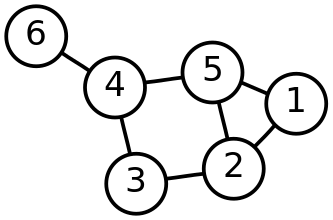VM7WC '16 #3 Silver - Can Shahir even get there?!
View as PDFShahir was already taped shut in the box when it occurred to him that he didn't know if it was possible to get from his house to his prom date's. That's no problem: he asks one of the friends that will deliver him, Dhruvit, to check.
There are houses in Shahir's neighbourhood, and
roads that connect those
houses. Each road connects two houses. All roads can be traveled down both directions. Each house is distinctly numbered and identified by a number in the range
.
Shahir lives in house . His date lives in house
. Is there a path of roads to follow such that Dhruvit can drive the packaged Shahir from house
to house
? Dhruvit wrote (and you, vicariously, will write) a program to answer that question.
Input Specification
The first line will contain four integers, separated by spaces:
: The number of houses in Shahir's neighbourhood.
: The number of roads in Shahir's neighbourhood.
: Shahir lives in house A.
: Shahir's date lives in house B.
The next lines contain two space-separated integers
and
, denoting a road that connects house
with house
. Two roads will never connect the same two houses.
Output Specification
On a single line, print GO SHAHIR! if Shahir can make it to his date's house. Otherwise, print NO SHAHIR!.
Sample Input 1
6 7 1 6
1 2
2 3
2 5
5 1
3 4
4 5
4 6Sample Output 1
GO SHAHIR!Explanation for Sample 1
Here is the graph of Shahir's neighbourhood:

Shahir's house is house . His date's house is at house
. Dhruvit can drive Jeffrey from houses
to
by following the path
or
.
Sample Input 2
6 6 1 6
1 2
2 3
2 5
5 1
3 4
4 5Sample Output 2
NO SHAHIR!Explanation for Sample 2
This map of Shahir's neighbourhood is the same as the one in Sample 1, but the edge between houses and
is removed. As a result, Dhruvit can no longer drive Shahir to his date's house.
Comments